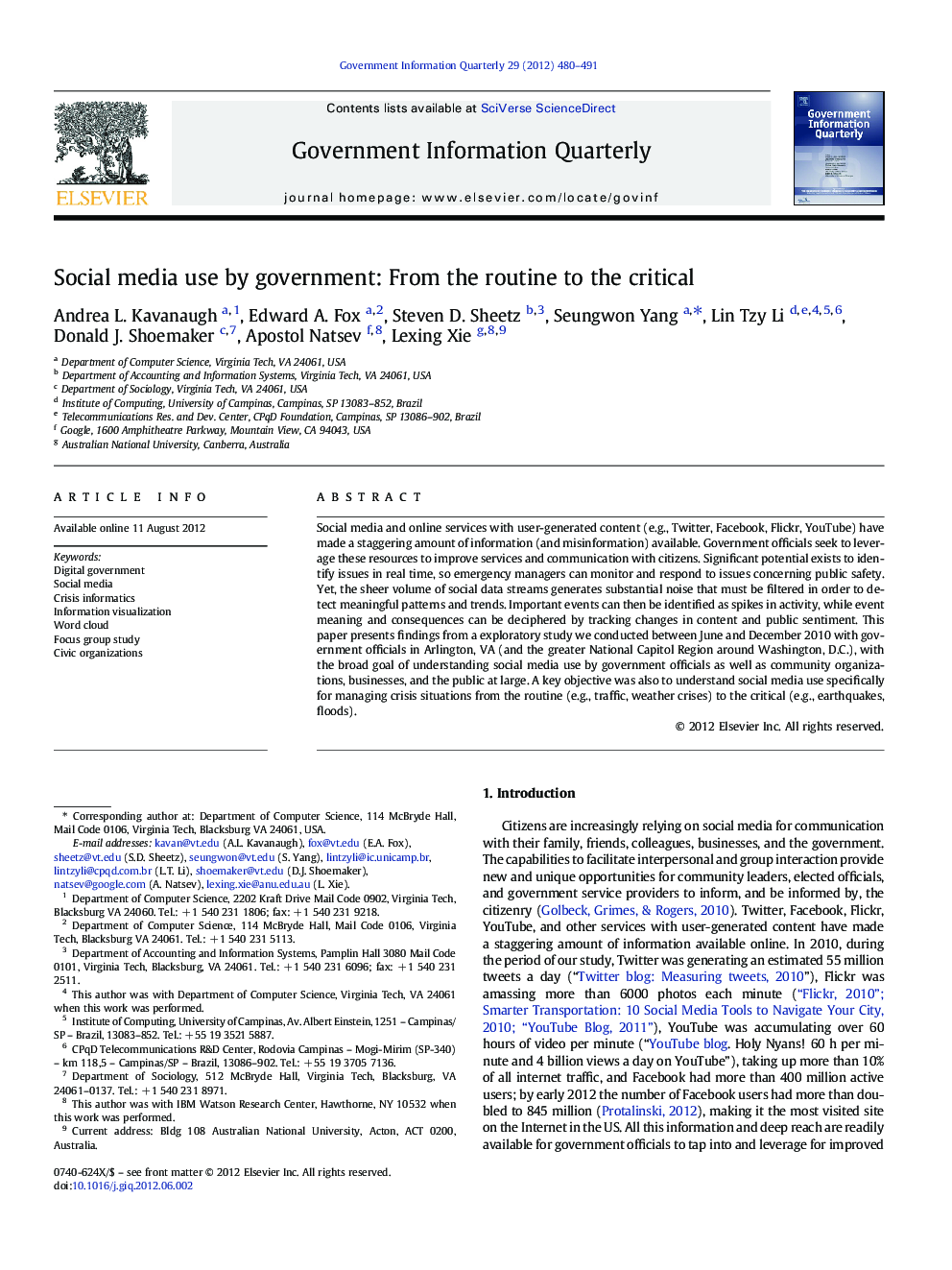| Article ID | Journal | Published Year | Pages | File Type |
|---|---|---|---|---|
| 1024550 | Government Information Quarterly | 2012 | 12 Pages |
Social media and online services with user-generated content (e.g., Twitter, Facebook, Flickr, YouTube) have made a staggering amount of information (and misinformation) available. Government officials seek to leverage these resources to improve services and communication with citizens. Significant potential exists to identify issues in real time, so emergency managers can monitor and respond to issues concerning public safety. Yet, the sheer volume of social data streams generates substantial noise that must be filtered in order to detect meaningful patterns and trends. Important events can then be identified as spikes in activity, while event meaning and consequences can be deciphered by tracking changes in content and public sentiment. This paper presents findings from a exploratory study we conducted between June and December 2010 with government officials in Arlington, VA (and the greater National Capitol Region around Washington, D.C.), with the broad goal of understanding social media use by government officials as well as community organizations, businesses, and the public at large. A key objective was also to understand social media use specifically for managing crisis situations from the routine (e.g., traffic, weather crises) to the critical (e.g., earthquakes, floods).
► Organizational and information factors affect social media adoption by government. ► Social media are rich, but overwhelming sources of information in crisis situations. ► Visualizations and data mining techniques help users make sense of social media.
